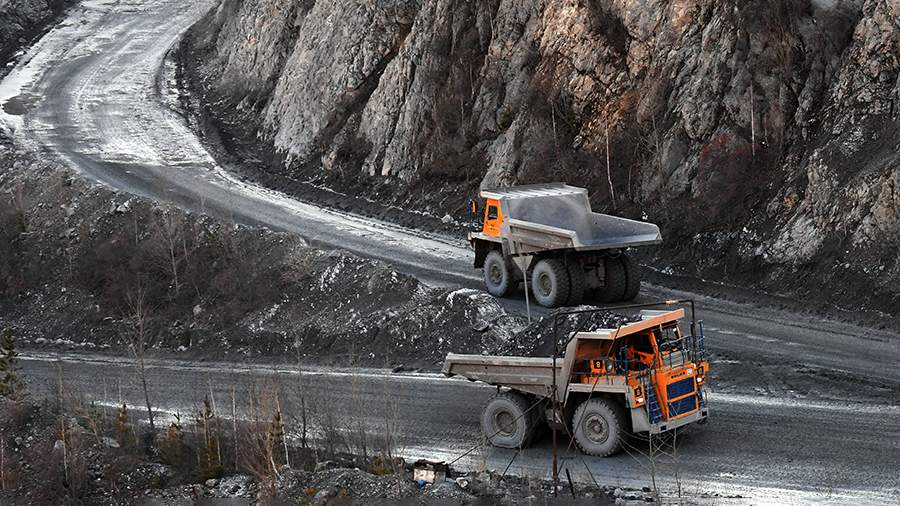
Expansion of nickel production may lead to its decrease
By Bogdan Kolbashuk
Nickel futures on February 27, 2024 fluctuate around $17 thousand per ton. Thus, they remain near their lowest level in almost three years.
Related article:
Russia proposed creating a global alliance of “raw materials of the future”
On Tuesday morning, the price of nickel on the London Metal Exchange (LME) fell slightly: by 0.6%, to $17,060 per metric ton. The best-traded March nickel contract on the Shanghai Futures Exchange (SHFE) fell 1.5% to 132,430 yuan ($18,397.4) per tonne.
This trend in nickel prices is explained by slower-than-expected growth in sales of electric vehicles, which reduces demand for this metal. Among the country factors, it should be noted that there is a decrease in demand from the largest consumer of nickel - China.
Also, negative news for prices was Indonesia's statement that its authorities are going to issue additional quotas for the production of nickel ore, which should help reduce its shortage in the world's largest producer of this metal. Indonesia accounts for more than half of the world's supply and could account for three-quarters of total production by the end of the decade.
Currently, a spokesman for Indonesia's Mining Ministry said Monday that the agency has issued mining permits for 145 million tons of nickel ore and 14 million tons of bauxite.
Market fears are justified: almost unlimited supplies of cheap metal from Indonesia do not allow other nickel projects in the world to earn money, which is pushing a number of them to bankruptcy. The situation is paradoxical.
A potential collapse threatens nickel mining from Australia to New Caledonia at a time when Western governments are struggling to secure the supply chains needed to decarbonize the global economy. But ironically, as Bloomberg notes, the production of nickel on coal in Indonesia is leading to a collapse in the market for this metal, which is important for the “green” economy.
Traditionally, nickel has been divided into two categories: low-grade nickel for stainless steel production, and high-grade nickel for battery production. Indonesia's massive expansion of manufacturing led to a surplus of low-grade products, but, crucially, technological innovation made it possible to process this surplus into high-quality metal.
Commodity markets have always been subject to cyclical volatility. But what is happening in nickel now is different: the entire industry is experiencing a structural shift that has changed all previous forecasts and models.
For instance, BHP Group, the largest mining company globally, considered nickel a crucial growth market to counterbalance the move away from fossil fuels. However, the metal has only resulted in losses so far. The CEO, Mike Henry, acknowledged this week that the company would have to decide on closing its primary nickel business in Australia within the next few months.
BHP Group has reduced the value of its business by $2.5 billion, citing a market surplus until at least 2030. This suggests that the issues are just starting.
In the meantime, Australia has strengthened its nickel industry by designating the metal as an essential utility. Natural Resources Minister Madeleine King acknowledged that international nickel prices are expected to remain low until 2024 and possibly beyond until the excess nickel in the market is cleared.
Nikolai Vavilov, a specialist in the strategic research department of Total Research, confirms that a serious surplus of metal from Indonesia is possible this year. He stated that the country capitalised on the surge in prices on the London Metal Exchange in March 2022, where the price of nickel exceeded $50,000 per tonne. During this period, the country actively developed its own deposits. It is predicted that the global demand for grade 2 primary (low-grade) nickel will increase by approximately 10% this year, due to increased consumption in the stainless steel sector and moderate growth in the alloys sector.
The analyst suggests that meeting the demand for high-purity class 1 nickel, required by manufacturers of batteries for electric vehicles, can be achieved by quickly commissioning new metal mining capacities in Indonesia, the main supplier, and China, a secondary one.
Currently, this market is experiencing a general decline in sales across all segments, which is reflected in the pricing policy of manufacturing companies. Consequently, the production of nickel of this purity class will remain unchanged.
Nikolai Vavilov also notes that, according to the basic supply-demand model, nickel prices on the London Metal Exchange (LME) are falling. Currently, the quotes for this metal are just above $17,000 per ton, which is the upper level of the cost curve. Due to intense competition and high production costs, around half of the metal producers are currently operating at a loss. Consequently, several global manufacturers have suspended metal production, while others have restructured their businesses and sought financial assistance from their respective authorities.
According to Dmitry Puchkarev, a stock market expert at BCS World of Investments, the market's expectations are currently restrained due to the persistent nickel surplus, which is likely to put pressure on prices in the coming years. BCS predicts that metal prices may drop to $13.5-14 thousand per ton over the next year.
